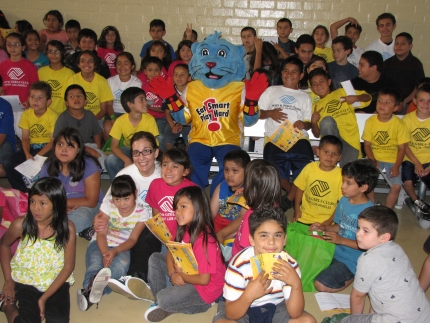
Can you name your favorite fruit or vegetable? Or how about your favorite way of exercising outdoors? At USDA’s Food and Nutrition Service these questions hold special meaning for us because we work every day to help people eat healthier and stay active. This focus is especially important for us this week as we highlight Latino health and well being in celebration of Hispanic Heritage Month.
Food plays a central role in Hispanic life and culture. Meals bring familias together, highlight tradiciones, and reflect the hard work of Latino farm and factory workers, cooks, wait staff, and many others. As the first Hispanic Deputy Administrator of USDA’s Supplemental Nutrition Assistance Program (SNAP), our nation’s largest anti-hunger program, it has been a privilege to work on improving Latino access and participation, visit Latino communities, discuss the paradox of hunger and obesity, and share how USDA nutrition assistance programs can make a difference toward building healthier lifestyles.
In doing so, I’m reminded of my childhood favorites such as platanos, mangoes, pimientos, and long walks, all favorites influenced by growing up as a first-generation daughter of immigrant parents in New York City. Despite our limited means, our family ate dinner together every night. Mom did her best to serve us fruits and vegetables—even if eating well meant spending less on other things. She would say that “meals are our health, and that our health is everything”. This message still influences my commitment to public service and guides my work at USDA on nutrition issues.
Unfortunately, Latinos in the U.S. are experiencing higher rates of poverty, hunger, obesity, and food insecurity. 40% of Latino children are overweight or obese, and a third live in poverty. Hunger and obesity are often two sides of the same coin as both are fueled by poor nutrition.
Rising obesity rates for Latinos has also contributed to increases in the chronic diseases that accompany the epidemic. One of every two Latino children born in 2000 or later is expected to develop diabetes. In addition to these concerns, Latino children are not sufficiently active. In fact, Latino youth spend more than the 7.5 hours a day that eight to 18 years old share in front of televisions, computers, video games, movies, and cell phones.
Although much work remains to be done to combat hunger and obesity in Latino households, USDA remains committed to make a difference. And it’s not all bad news! In fact, we have much good news to share since just last year, including:
- In February 2010, the First Lady launched Let’s Move! so that we can all play a part in ending childhood obesity. Visit the Let’s Move! website to find ways—both large and small—that kids, parents, schools, and communities can make eating healthier and staying active fun.
- President Obama’s signing of the Healthy, Hunger-Free Kids Act last December will give all children access to healthy school meals, including more fruits, vegetables, whole grains, and water. It will also strengthen links to SNAP, and fund more local farm to school networks and school gardens.
- In June, Secretary of Agriculture Tom Vilsack hosted the First Lady for the launch of MyPlate. MyPlate replaces MyPyramid, and is a simple reminder to eat healthy no matter what age we are.
- In July, Secretary Vilsack announced USDA’s Food and Nutrition Service and Center for Faith Based effort, La Mesa Completa. This Latino-focused initiative ensures that all eligible children and families have a seat at the Food and Nutrition Service Program table.
- The USDA SNAP program continues to help more than 46 million people every month, including 5 million Latinos and 17 million children. Our National School Lunch program serves more than 32 million children, and our WIC program (for Women, Infants and Children) serves more than 9 million Moms, infants, and children, including more than 3 million Hispanics.
So the next time you share a meal with your family, remember that you can make small, simple changes toward healthier eating, more physical activity, and better well being. Together, we can all play a part in encouraging Latino families and communities to embrace a healthier lifestyle. After all, like Mom says, our health is indeed everything, or nuestra salud es todo.
For more information on USDA’s fifteen Food and Nutrition Service programs and careers, visit the FNS web site. You can also follow USDA @USDANutrition on Twitter, on Facebook, and read USDA’s Blog.
Lisa Pino is the Deputy Administrator of the U.S. Department of Agriculture’s Supplemental Nutrition Access Program (SNAP) at the Food and Nutrition Service.


